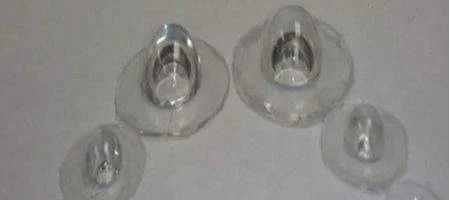Researchers have created a new artificial lens, made up of thousands of nanoscale polymer layers, that’s almost identical to the lens in a human eye.

As well as the obvious medical applications, it could be used in consumer vision products and even ground and aerial surveillance technology.
The lens is based on a new technology called GRIN, or gradient refractive index optics. In GRIN, light gets bent, or refracted, by varying degrees as it passes through a lens or other transparent material – unlike traditional lenses, which bend light using their surface shape or single index of refraction.
“The human eye is a GRIN lens,” says Michael Ponting, polymer scientist and president of PolymerPlus, an Ohio-based Case Western Reserve spinoff launched in 2010.
“As light passes from the front of the human eye lens to the back, light rays are refracted by varying degrees. It’s a very efficient means of controlling the pathway of light without relying on complicated optics, and one that we attempted to mimic.”
The team built the lens by stacking thousands and thousands of nanoscale layers, each with slightly different optical properties, to produce a lens that gradually varies its refractive index.
Current replacement lenses, such as those used to treat cataracts, never achieve the same performance of natural lenses because they lack the ability to incrementally change the refraction of light.
“A copy of the human eye lens is a first step toward demonstrating the capabilities, eventual biocompatible and possibly deformable material systems necessary to improve the current technology used in optical implants,” says Ponting.
GRIN also enables optical systems with fewer components, which could be very useful for consumer vision products and ground- and aerial-based military surveillance products.
The team’s working to commercialize the technology.
“Prototype and small batch fabrication facilities exist, and we’re working toward selecting early adoption applications for nanolayered GRIN technology in commercial devices,” says Ponting.






